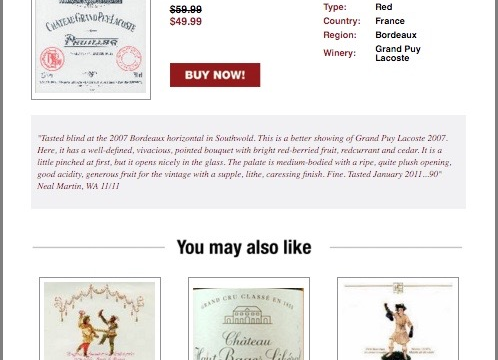Can e-commerce sites create personalized customer relationships? As a customer loyalty thought-leader, my answer is always, emphatically, “yes”. Unfortunately, most e-commerce sites are missing a human component and fail to make that critical personal connection.
The strongest loyalty or bond is between two people and not a brand or retailer. Of course, there are exceptions to any rule and customers align themselves to companies like Zappos, Apple and Amazon. But remember those companies are known for their customer service and their representatives are trained and empowered to provide a positive customer experience. However, for the typical business and its e-commerce site, the way to generate long-term loyalty and repeat business is to structure person-to-person service; Mary to John, Sally to Jose, Henry to George. It’s about creating and building personal relationships.
The best example I use is the e-commerce site of Mitchells Family of Stores. Mitchells has replicated their person-to-person philosophy on their e-commerce site.
Jack Mitchell is CEO and author of Hug Your Customers and Hug Your People. Jack’s motto is, “it’s more important for sales associates to know their customers than to know their inventory”. Jack says anyone can help you with merchandise, but it’s the salesperson’s responsibility to learn as much as they can about the customer personally. Mitchells is a large and successful retailer whose customers return again and again.
When Mitchells’ Executive Team wanted to implement an e-commerce channel, Jack put his foot on the brake. E-commerce is impersonal. How can we hug our customers in an online environment? The solution was simple: allow on-line users to select and email specific people, complete with a photo and profile, when they had an inquiry regarding a potential purchase. When you click on the site, the customer finds a gallery of sales representative’s photos complete with information about how long the person has been working for Mitchells, their fashion sense and favorite designers. It’s easy for a current or prospective customer to communicate directly with a person, a real person who has a real name. This puts the customer in control, helps to establish a relationship and sets the stage for generating a lifetime of revenues. Jack understands what I also learned from my dad long ago – the value of a relationship with one person to another.
Any e-commerce site that is 100 percent self-serve will not serve your business well. Replicate the person-to-person strategy as Jack did for his business. For customer service departments that support e-commerce, assign specific customers their own representatives. Segment your department into small teams so that even if the assigned representative is not available, someone else on the team can still provide that on-one-on approach.
There is a war going on and you want your business to survive and thrive. E-commerce must replicate the personalized approach that keeps customers returning to their local coffee shop because Mary or Alex greets them everyday with a big hello, knows their name, what they like, and says, “Can’t wait to see you tomorrow.”
I’m afraid that with the onset of chatbots, voice shopping and augmented reality, businesses will lose sight of what drives their success: the customer. Customers have names, associates have names; everyone is a person. Match the appropriate customer with the right associate. It’s a win-win situation for your business. I don’t want to hear that e-commerce sites cannot be used to create personalized relationships. I guarantee it can work.
Author : Richard Shapiro
Richard R. Shapiro is Founder and President of The Center For Client Retention (TCFCR) and a leading authority in the area of customer satisfaction and loyalty. For 28 years, Richard has spearheaded the research conducted with thousands of customers from Fortune 100 and 500 companies compiling the ingredients of customer loyalty and what drives repeat business. His first book was The Welcomer Edge: Unlocking the Secrets to Repeat Business and The Endangered Customer: 8 Steps to Guarantee Repeat Business was released February, 2016.






